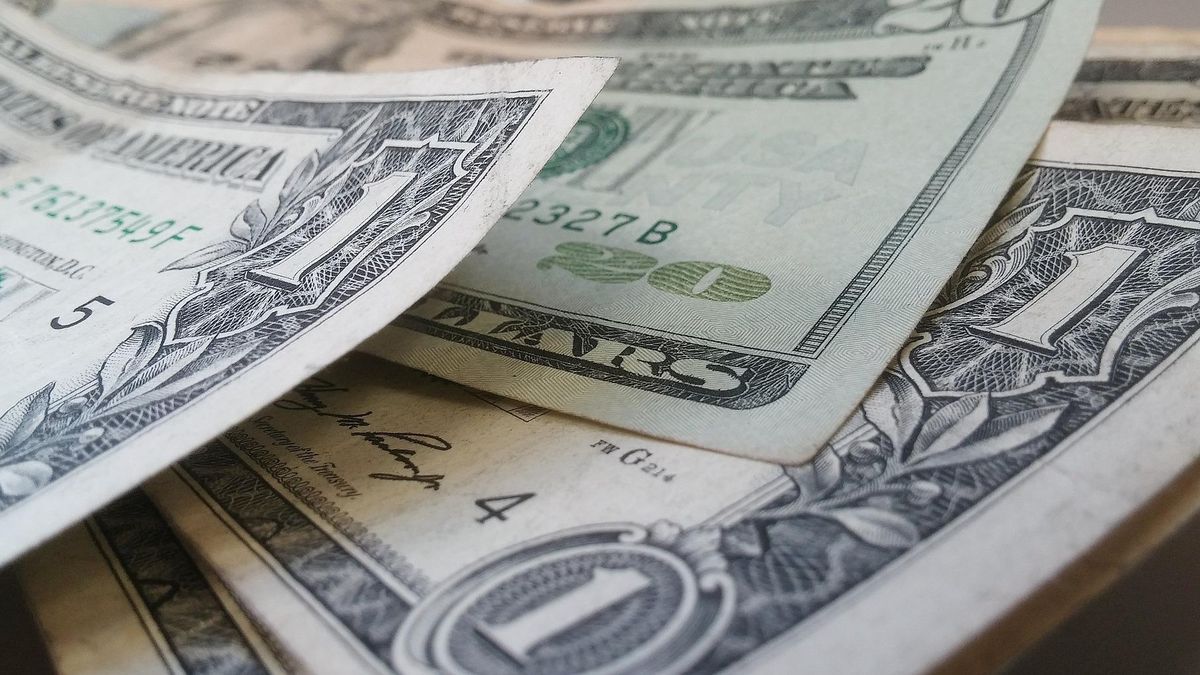As a result of the official exchange rate strategyanalysts have been warning that The real exchange rate continues to appreciate which, in calculations by Consultant 1816, implies that the $800 dollar in December is $1,480 in today’s values. On top of the recent rise of the dollar At a global level in recent days, this process of exchange appreciation has accelerated, which according to the consultancy took the real exchange rate to levels prior to the Massa devaluation (at $350).
The Government insists that will not modify the crawling peg rate of 2%, but it also maintains the restrictions on the CCL dollar, which together with the dollar mix (80-20) explains why cash almost does not react to rate drops. However, after several weeks of calm, both the CCL dollar and the MEP dollar were reactivated in response to a wide range of both local and international factors, accumulating strong increases since last week, reactivating the The question is whether the exchange rate pax is over or the carry trade continues.
From the highs of mid-January last $1,300 (with a gap greater than 60%), the CCL dollar began a downward path that became more pronounced since the beginning of April thanks to a growing flow of currencies that took it to minimums of $1,020/30 (with a gap less than 20%). But in the last few days This trend seemed to turn around, slightly raising the differential between the financial dollar and the wholesale exchange rate.
Dollar: impact of the Fed’s monetary policy and geopolitical tensions
The recent movements of financial dollars seem logical when taking into account the unfavorable international outlook, particularly with regard to the Fed monetary policy. Furthermore, the latest US economic data modified investors’ expectations regarding the Fed’s behavior. ruling out a reduction in rates in the short term and projecting a more gradual behavior at the beginning of said cycle of cuts. In this context, the 10-year US Treasury rate rose to a level last recorded in November, with the same situation occurring for the so-called dollar index.
Furthermore, at the international level, there are increasing geopolitical tensions after the Iranian attack on Israel and the expected Israeli retaliation. Such events have generated noise in the market, driving volatility and pushing the migration to lower risk assets. This strengthening of the dollar and greater volatility impacted the rest of the world’s currencies, particularly those of the region: The real depreciated by 5.2%, the Chilean and Mexican pesos depreciated by 4%.
P4 – Jerome Powell (RE_opt.jpeg
Hence, as the Dollar Index takes flight and the rest of the currencies devalue, and the official exchange rate continues to adjust at 2% monthly, for below the rate of inflationthe doubts about the sustainability of the exchange strategy. Furthermore, the impact of the devaluation of currencies of trading partners of Argentina calls into question the projections of foreign currency income by raising revenues due to a devaluation of the official exchange rate.
“Focusing on the endogenous aspects, there is a local factor of great impact on the recent increases in financial dollars: the lower settlement volume. Due to the dollar mix, that is, the settlement of 80% of foreign currency through the MULC and the remaining 20% through the CCL, in the second market the supply in those wheels with the highest settlement volume increases significantly, thus giving rise to a “very close relationship between the volume traded in the exchange market and the rise and fall of the CCL”explains the manager IEB.
Dollar: the rains that complicated the harvest
It is worth remembering that in previous weeks there had been a significant increase in the volume operated through the MULC, which translated into declines in the CCL dollar, but then due to the effect of the rains that complicated the harvest and the entry of trucks into the fields, Volumes in recent days were strongly affected, leading to an increase in prices.
“In turn, part of the recent movement in dollars has been attributed to the latest drop in the BCRA’s monetary policy rate. “We do not agree with this vision, since if this had been the case, the strongest increases should have been observed in the last rounds of last week, with an almost immediate reaction,” IEB analysts point out.
Therefore, they come to the conclusion that the Recent rises in financial FX dollars would be transitory in nature and in the short term the dollars should remain relatively stable, as well as the carry continues to be an attractive alternative, even after the rate cut.
“As the volumes operated in the MULC normalize after the harvest stoppage and the liquidation accelerates with the entry of the coarse harvest, the supply in the CCL dollar will increase substantially, pushing the price downward. Therefore, we do not consider that the international context is adverse enough to interpret it as a headwind,” they say.
However, they recommend providing special attention to what happens with the US Treasury rate and the rest of the world’s currencies, mainly those of the main trading partners (Brazil, Euro Zone, China), since a Worsening international climate could quickly become a complication for maintaining a calm dollar.
Source: Ambito
I am a 24-year-old writer and journalist who has been working in the news industry for the past two years. I write primarily about market news, so if you’re looking for insights into what’s going on in the stock market or economic indicators, you’ve come to the right place. I also dabble in writing articles on lifestyle trends and pop culture news.




